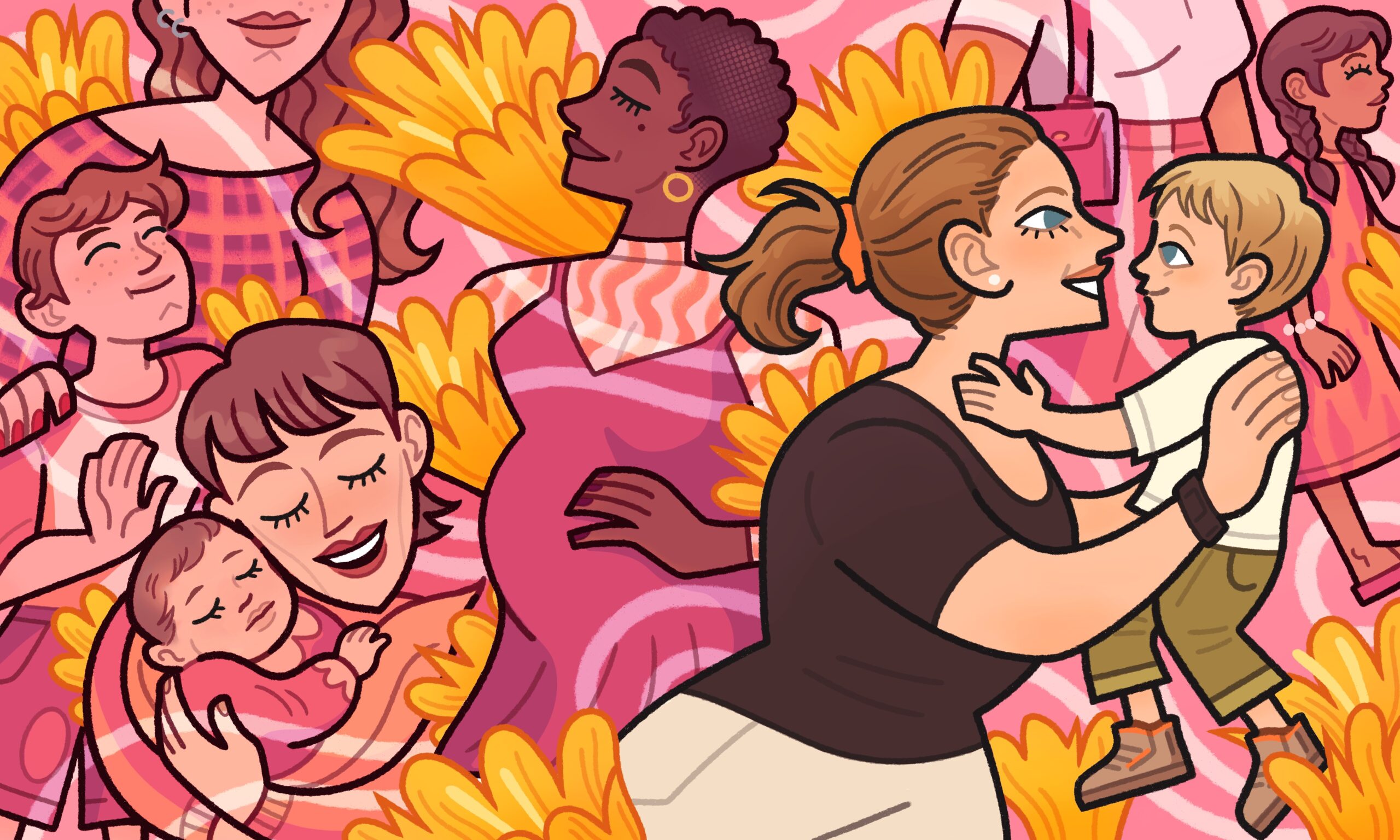
LAUREN IBAÑEZ/ NEXTGENRADIO
What is the meaning of
home?
Sarah Rogers speaks to Sara Lane in Raleigh, North Carolina, who decided to become a single mother by choice. After she had her son Jack, Lane wanted to make sure that he was connected to his family and to others like him. What she ended up creating was a community for them both.
A single mother by choice finds family in abundance for her donor-conceived child
A single mother by choice finds family in abundance for her donor-conceived child
Click here for audio transcript
It wasn’t until I had Jack that suddenly I really felt like where I lived was my home.
(Sound of keys in door)
(Dialogue: “Do you wanna check the mail?” “Yeah!” “All right.”)
I’m Sara Lane. I’m a single mom by choice and I live in Raleigh, North Carolina with my three-year-old son Jack.
A single mom by choice is a woman who chooses to have a child on her own without a partner who is involved in the creation of the child, and usually raises the child on her own.
So my younger brother had my niece and I would go over and babysit her, and I would sit there and hold this little baby and think, “I really want one of these for myself.”
So I decided that I would wait until my 40th birthday and if I hadn’t found Mr. Right by then, I would go to my gynecologist and just kind of check out what to do.
And she sent me to the fertility clinic, and I used a sperm donor. I was really lucky because I got pregnant on the very first try, which at age 40 is practically unheard of.
Jack was born during the pandemic. He was born in June of 2020. And so it was kind of a weird pregnancy experience because no one really ever saw me pregnant. I didn’t get to have a baby shower. It felt very lonely.
I’ve always wanted to try to bring as many great people into Jack’s life as possible, and so connecting with his half siblings just made sense to me.
The sperm bank that I used has a sibling registry. Jack was actually the first child from his donor on the sibling registry. But very soon after, there was another mom who registered her child, and she had a son as well who was born 10 days after Jack, and we just had so much in common. She was also a single mom by choice. And then shortly thereafter we got three more moms.
We currently are in touch with nine different families, 11 siblings amongst those nine families.
We invited everyone who we had been in contact with to come on this sibling vacation, and the kids get along really well. They played together. We talked when we were on vacation about forming a “mom-mune,” like a mom commune.
Honestly, the donor sibling family experience has been one of the best relationships, and, and best experiences that I’ve ever had.
It was important to me to connect with his donor siblings, because at least then he does have that genetic connection to that side of his family, and hopefully that helps to fill in what might feel like a hole. It helps to fill that in, and, and kind of overflow with even more relationships and more great people who are his family.
I had moved about every two to three years for like 11 years. And so when I moved to Raleigh, I was really at a point where I wanted to settle down. I’ve never lived somewhere where I knew my neighbors as well as I do in this neighborhood.
(Dialogue over background noise of cars on the street:
“Hi, Mr. Randy, how are you doing?” “Where my buddy at?” “He’s right here. I’m getting him out. Hold on. All right, you wanna go see Mr. Randy?” “Buddy! Here come your friends.”)
I hope that Jack remembers a feeling of love and acceptance, and I also want him to feel like he has a community that supports him, so that he knows other kids who are children of single moms by choice, who are raised in a similar way that he is, that can normalize it for him so he doesn’t feel like he’s lacking.
Before I had Jack, home was often my parents’ house. Now my parents’ house is just a place we go visit, and a place that sometimes Jack hangs out for the weekend. But home is where Jack and I are.
When she was 39, Sara Lane held her brother’s newborn daughter and knew, with a stab of certainty, that she wanted to have a baby. She had spent her twenties and thirties moving from career to career, state to state, and even country to country during a stint in the Peace Corps. She owned a house in Raleigh and loved her neighborhood. But she still didn’t have the kind of home she wanted – one with a child.
“I’d always imagined that I would be a mother. But it just wasn’t happening,” she said. “As I got … closer to 40 and didn’t have a partner in my life, I thought, ‘you know, if I wanna be a mom, I need to make this happen,’ and so I went that route.”
Lane is a single mother by choice, meaning that she made the decision to become a parent on her own. Though the U.S. Census doesn’t track the number of households headed by single mothers by choice, there’s evidence they’re on the rise: the organization by the same name says it’s had 30,000 members since 1981.
After talking with her gynecologist in 2019, Lane, now 44, went to a fertility clinic, chose a sperm donor from a website, and underwent intrauterine insemination. She got pregnant at 40 on her first try.
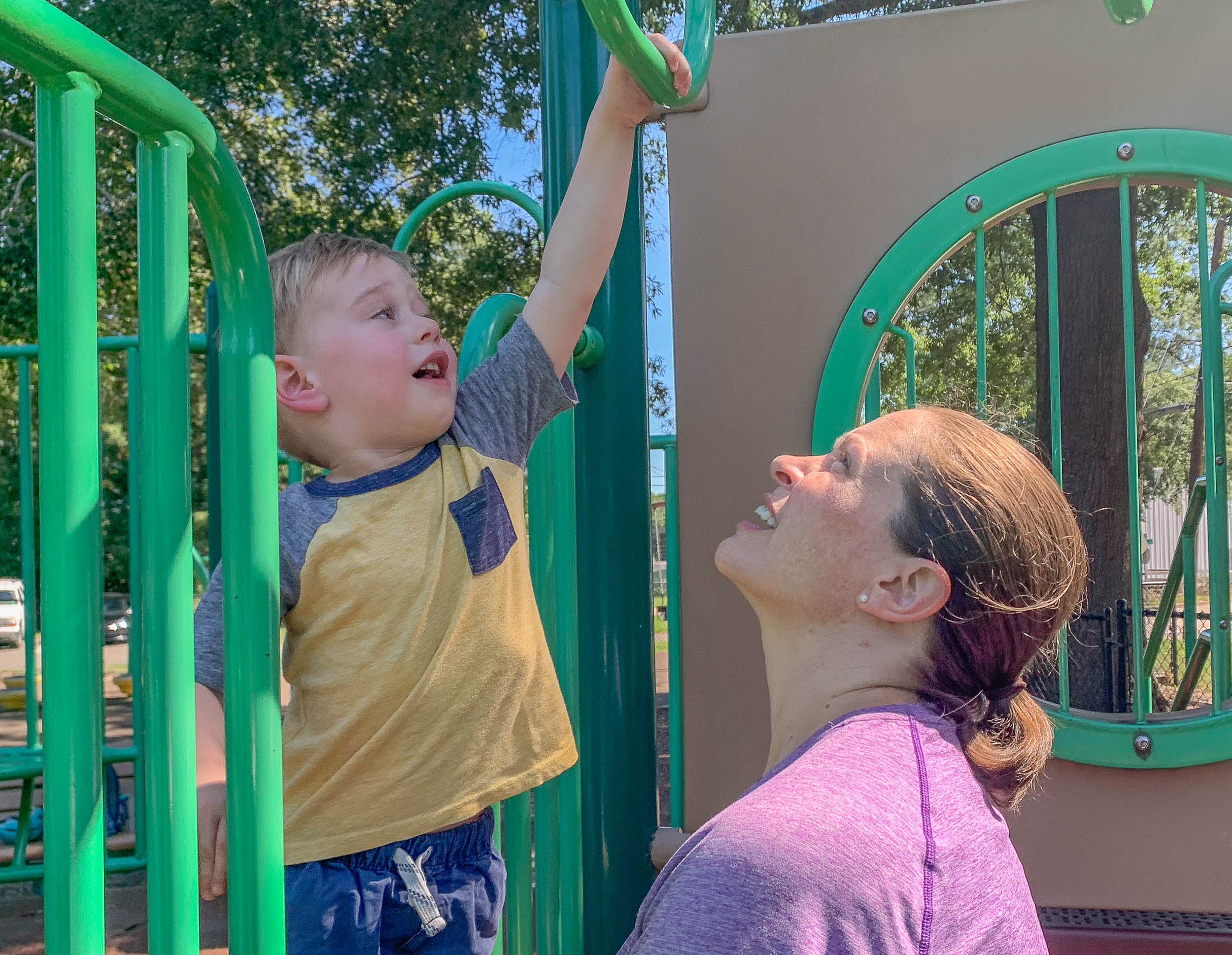
Sara Lane helps her 3-year-old son Jack on the monkey bars at a playground in Raleigh, N.C. on July 30, 2023. A single mother by choice, Lane conceived using donor sperm in 2019. Jack was born in June of 2020.
SARAH ROGERS / NEXTGENRADIO
She surprised her family at Christmas that year with a picture of a sonogram announcing her pregnancy. Her parents were confused. Then congratulatory, but also cautionary.
“They said, ‘this is gonna be really hard,’” she said. “And I’m like, ‘you don’t think I know that?’”
Once Jack arrived, her parents were over the moon. But it was hard for another reason: Jack was born during the pandemic, in June of 2020.
“And so it was kind of a weird pregnancy experience because no one really ever saw me pregnant. I didn’t get to have a baby shower,” she said. “It felt very lonely.”
As I got… closer to 40 and didn’t have a partner in my life, I thought, ‘you know, if I wanna be a mom, I need to make this happen.
But parenthood came naturally to her, and she said Jack was an easy baby.
Today, her home with Jack is chaotic but joyful. He’s 3 years old and likes swimming and riding his bike. And due to his conception by donor, he has at least 14 half-siblings, and he likely has more on the way.
“I’ve always wanted to try to bring as many great people into Jack’s life as possible,” Lane said. “And so connecting with his half-siblings just made sense to me.”
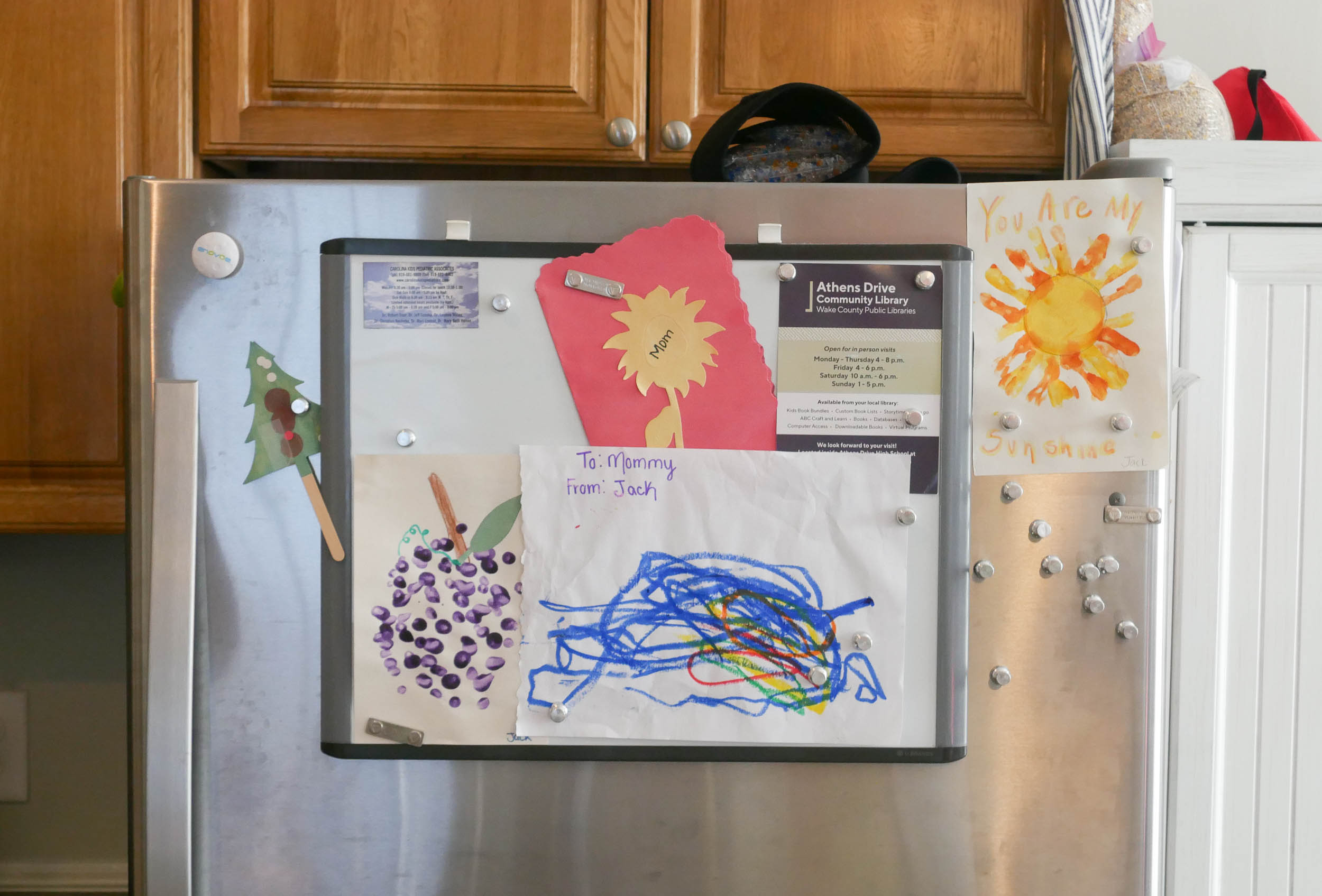
Lane displays Jack’s art on the refrigerator in the kitchen of their home.
SARAH ROGERS / NEXTGENRADIO
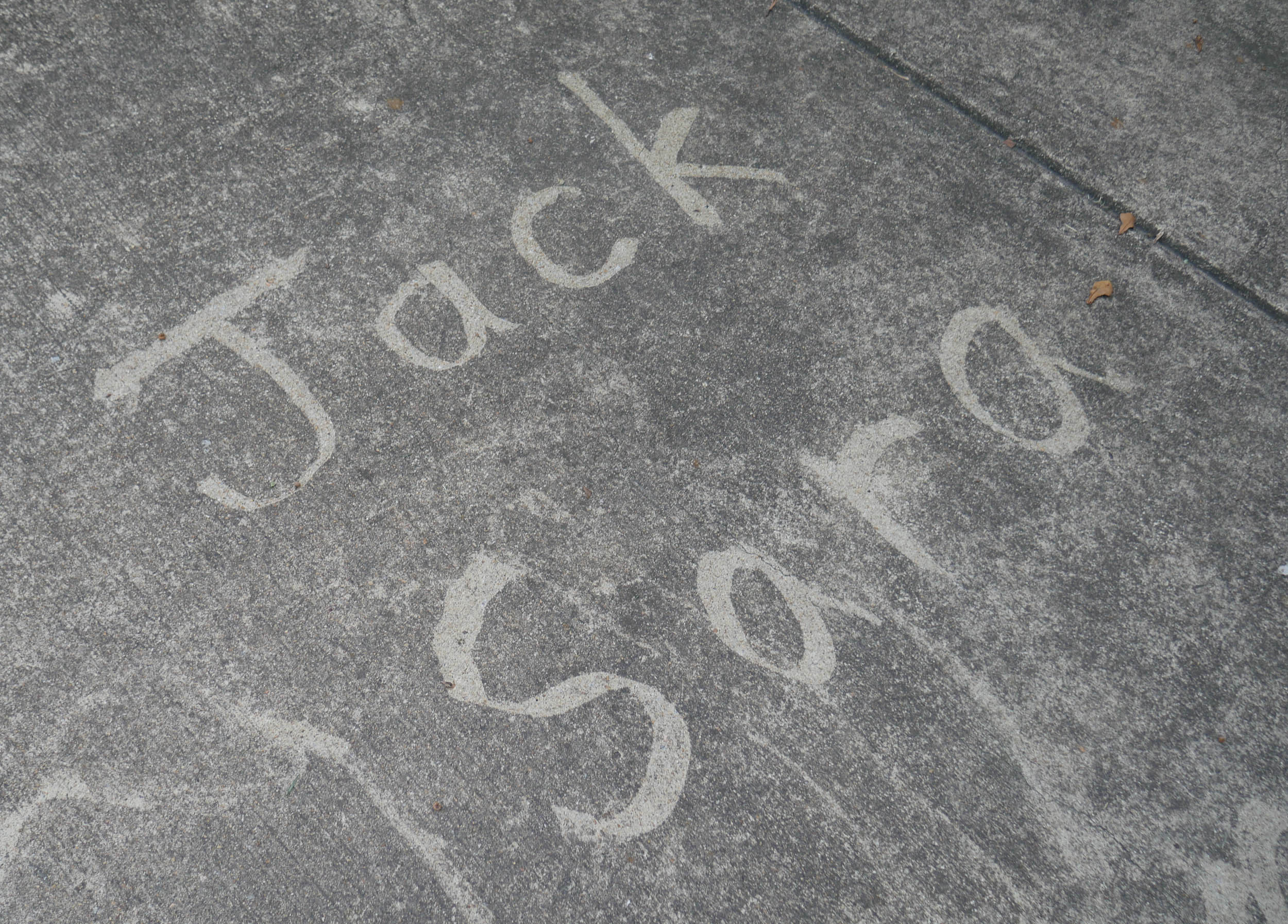
Lane and Jack’s names are written on the concrete driveway outside of their home in Raleigh.
SARAH ROGERS / NEXTGENRADIO
Using her cryobank’s sibling registry, Lane and Jack eventually befriended eight families who had all conceived children with the same donor. Some were single mothers by choice, like her. Others were same-sex couples.
The sense of connection between the families was nearly instantaneous. They found that they had a lot in common beyond the resemblance between their kids.
“We’re not people who worry too much about what the rest of the world thinks of us,” said Lane, adding that they want to normalize nontraditional families so that their children can grow up in a loving and supportive world.
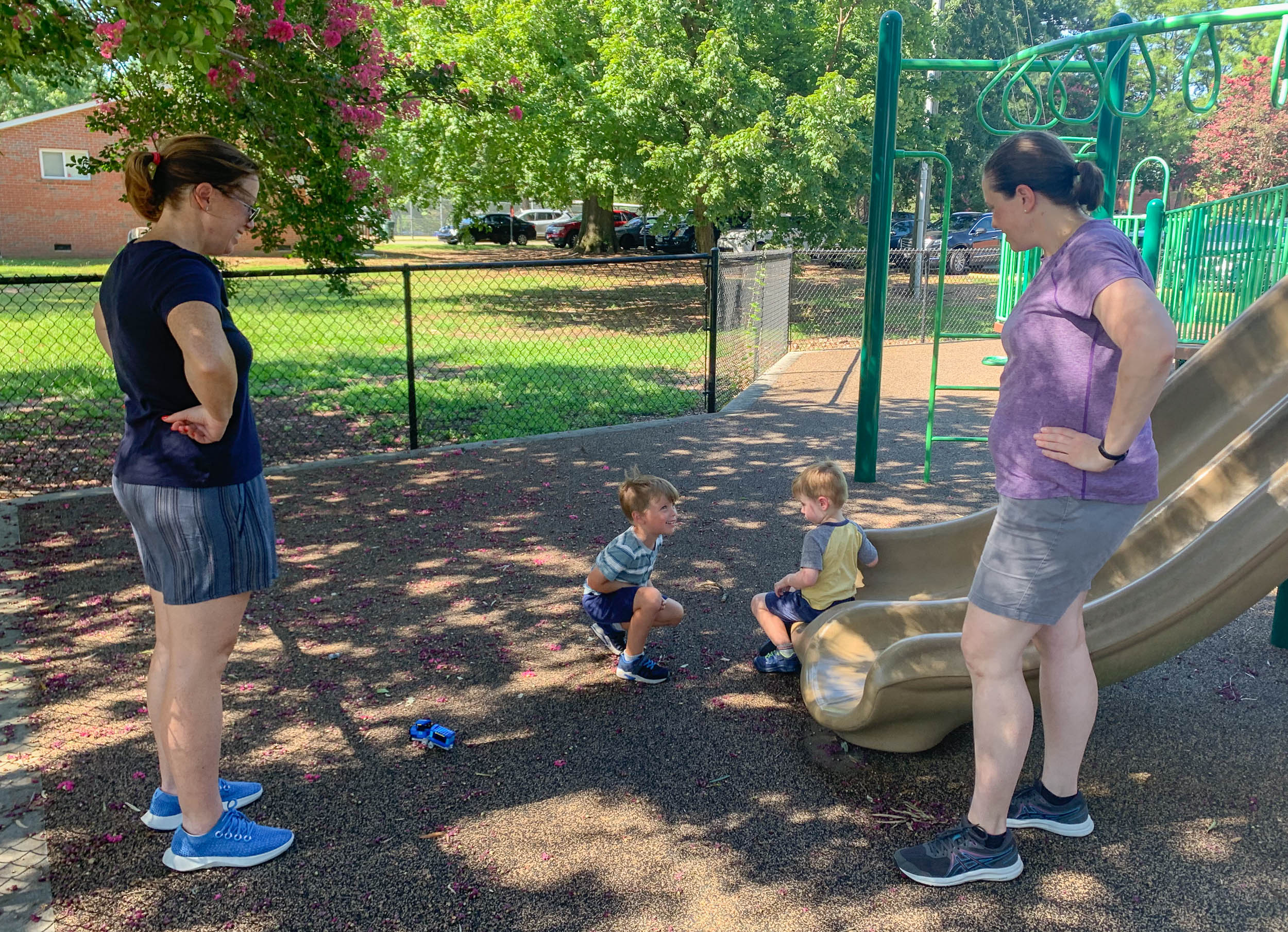
Lane connected with other local single mothers by choice through a Facebook group. She and Margot Lawless (left) sometimes organize playdates for their sons. Lawless’ son Andrew is on the left; Jack is perched on the slide.
SARAH ROGERS / NEXTGENRADIO
“We really want the best for our kids, just like anyone does,” she said.
Lane and Jack recently took a vacation to Florida with three of the families – five donor siblings in total. The kids had a great time playing in the pool. The moms had a great time staying up late while the kids were asleep, eating ice cream and cookies, and talking.
“Honestly … the donor sibling family experience has been one of the best relationships and best experiences that I’ve ever had,” she said.
Lane’s family is on the smaller side, so she loves that Jack has the chance for abundant relationships because of his genetic connection with his donor siblings. But she also hopes to give him another sibling.
Lane sits at her kitchen table in her Raleigh, N.C., home. In this audiogram, she describes how her journey to conceive a second child took an unexpected turn.
SARAH ROGERS / NEXTGENRADIO
“I always imagined that I would have two to three children,” she said.
Since she started her family at 40, she knew that time wasn’t on her side, so she started trying to conceive again only five months after Jack was born. But after two years, she gave up on the idea of using her own eggs.
Last fall, one of the donor sibling families, who did in vitro fertilization and ended up with extra embryos, offered to donate some to her. If she conceives using one of these embryos, the resulting child would be a genetic half-sibling to Jack.
“He’s very excited about the possibility of maybe someday having a little brother or sister,” she said.
Connecting with the donor sibling families, as well as other single mothers by choice in Raleigh, has been a source of invaluable support for Lane. And building her family has finally given her a sense of her own home.
“It wasn’t until I had Jack that suddenly I really felt like where I lived was my home,” she said.
